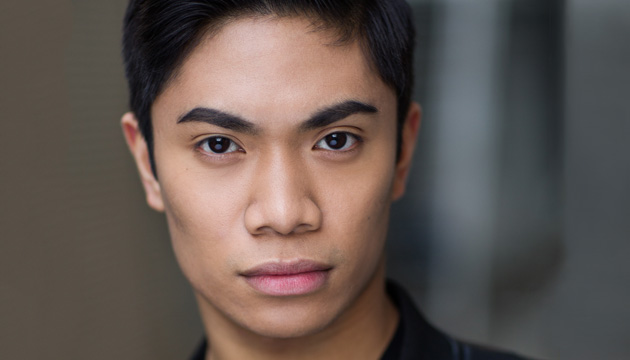Temporary foreign worker programs (TFWP) or “guest worker” schemes are an example of contradictions in liberal democratic states
that have to find compromises in achieving conflicting social and economic objectives, and meet divergent interests of different groups in their societies.
In order to achieve greater productivity and economic efficiency, have a more equal distribution of income, enhance social cohesion and feelings of national identity, and maintain national security and public order, policy makers have to make difficult choices on ends to pursue and on instruments to use. Because it is in their interest to have ample supply of workers at low or stable wages, business pressures their governments to have a wider door open for foreign workers. Trade unions, fearing loss of jobs of their members and negative effects on wages, prefer to close them.
Commitment to equal treatment for all workers often runs up against concerns of tax payers over the cost of extending to all newcomers public services like schools and medical care, and social safety nets like unemployment insurance when economies are susceptible to sudden downturns. With growing concerns over ethnic tensions and public safety, citizens pressure their governments to tighten doors and be more discriminate in allowing entry and stay.
Except for inherently “time –bound” jobs such as in construction or in agriculture, TFWP is hard to justify for most jobs that are inherently continuous. The very term “temporary” already indicates a denial of equal rights to job security, to equal treatment in social security, mobility in the labour market, access to promotion, and in many instances to be reunited with families. However, temporary schemes have been easier to sell to the voters because they are perceived, rightly or wrongly, to be on balance highly beneficial. They offer flexibility and speed in meeting fluctuating demand for labour, to minimize the risks of crowding out native workers, and to maximize net fiscal benefits since guest workers may pay taxes but will not bring their families.
Most states have adopted immigration policies which essentially aim to “keep the skilled” and “rotate the unskilled”. Most countries, developed as well as developing, including the Philippines, are guided by the same philosophy in their approach to immigration. Interestingly, Canada’s TFWP was originally used to bring in highly-skilled foreign workers. The traditional countries of immigration (U.S., Canada, Australia and New Zealand) slightly differ from others to the extent that they still give priority to “family reunification” for permanent residence, but the wider trend over the recent past has been to use immigration, much like a water tap, to be in sync with cyclical fluctuations in their economies, rather than to fill its historic role in constructing societies. Canada’s annual admission of temporary foreign workers rose from less than 14,000 in 1995 to over 94,000 in 2014.
Although ageing societies like many in Europe recognize their inevitable need for more immigrants if they are to sustain their standards of living, far-right political parties have driven the discourse on immigration away from these long-term considerations to easily exploitable concerns over losing control over borders and rising social costs as the numbers of refugees and irregular migrants have in some places exploded.
The Brexit vote is an outstanding example of where such paranoia can lead to self-inflicted damage to their economies. The consequence has also been to disregard the fact that most newcomers work “hard and scared” because they want very much to stay and build their lives in countries where they can feel safe and secure.
In Canada, we are fortunate that immigration has not aroused the same toxic debate and passions as in other countries. The House of Commons committee that has been tasked by the new government with making recommendations for Canada’s temporary foreign worker program announced last September some proposals which in my view are very hopeful.
The most important is the proposal to eliminate the tying of work permits to the employer. This policy, followed by many labour-importing countries, has a devastating effect on the power of the worker vis a vis his or her employer, with predictable consequences on conditions of employment. Change in this policy will most probably involve requiring a new employer (or the worker) to pay back the original employer for any of the cost incurred for recruitment and travel.
The second most important recommendation is the opening of a pathway for temporary workers to obtain permanent residence. And the third is the proposal to end the “cumulative duration” rule which makes certain workers ineligible for new work permits if they have been in Canada for four years. Whether the latter is envisaged to have retroactive effect to benefit those who have completed four years and have applied for extension was not clarified however. This is a major concern for many temporary migrants who have already settled in the country with their families.
And finally, the fourth important recommendation is for Immigration, Refugees and Citizenship Canada (IRCC) to provide multiple entry visas for seasonal workers.
How much of these recommendations will find their way into Canada’s immigration policy remains to be seen, but recent statements by the Minister of Immigration gives reason for optimism. He has been quoted as saying that Canada needs more immigrants and proposed to raise the admission level next year to 320,000. Favored categories are family reunification and economic migrants with skills needed in the country.
Over the past decade Filipinos have led the rise in admissions as permanent immigrants. According to Statistics Canada from 2006 to 2015, some 321,742 Filipinos arrived in Canada as permanent residents. We have become the largest entrants over the years, with only 18,400 admitted in 2006 rising to 50,816 in 2015.
It is highly unlikely that Canada will abandon or even give lower priority to its temporary foreign worker program in the future because it is the easiest path to responding to business clamour for more workers, but the reforms being proposed will eventually remove much of the real differences between temporary and permanent admissions. Keep in mind that migration is not a problem to be solved, but a process that needs to be managed. Vigilance and active engagement of Filipino communities in Canada in the task of improving migration management is making a difference.













